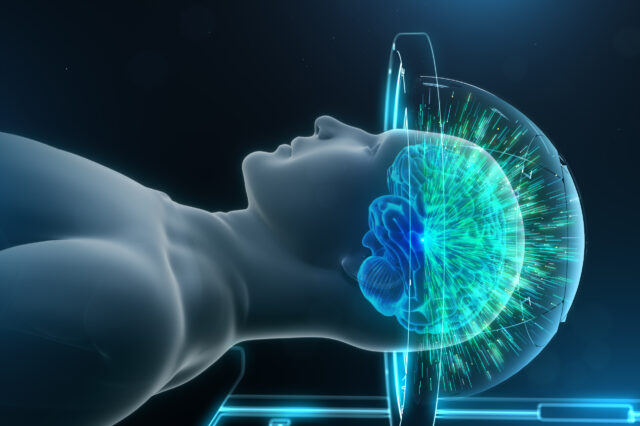FUS: The new standard
In 2021, focused ultrasound became the most common interventional procedure for essential tremor in the United States, surpassing deep brain stimulation.

Update your location to show providers, locations, and services closest to you.

Imagine being able to write a card for a loved one again, to paint, to cook or simply being able to eat without help. Now, imagine recapturing all those cherished activities on the same day with an innovative, incisionless procedure.
UF Health’s nationally recognized neurology and neurosurgery experts do this for dozens of patients a year by treating essential tremor with focused ultrasound. This disabling tremor, a movement disorder that occurs during voluntary movement, affects the lives of more than 60 million people a year worldwide. UF Health is proud to offer this life-changing, leading-edge procedure that can reduce your tremor and safely restore your quality of life.


We are proud to care for patients at UF Health Shands Hospital, ranked as one of the nation's top hospitals for neurology and neurosurgery by U.S. News & World Report.
Focused ultrasound, or FUS, is an incisionless treatment option that has been approved by the FDA since 2016 to treat essential tremor of the hand, as well as those with tremor-dominant Parkinson's disease. The outpatient procedure is guided by magnetic resonance imaging, or MRI, using ultrasound waves to safely pass through a patient’s skull and precisely heat and destroy specific regions deep inside the brain that are involved in generating tremor. During the treatment, which lasts about two hours, you’ll interact with our expert team to make sure you achieve excellent tremor suppression with minimal side effects.
In 2021, focused ultrasound became the most common interventional procedure for essential tremor in the United States, surpassing deep brain stimulation.

Patients experience a noteworthy boost in their ability to perform everyday activities and psychological wellness.
Studies demonstrate a 73% tremor improvement at five-year follow-up, showing not only immediate but also durable results.
The technique uses ultrasound waves that pass safely through the skull and into the brain without need for a surgical incision.
As a nonsurgical, outpatient procedure, patients can expect to resume normal activity within days.
To be a candidate for FUS, you must meet the following criteria:
A clinic appointment with neurosurgeon Dr. Justin Hilliard will be scheduled at the Norman Fixel Institute for Neurological Diseases. You will undergo a through neurologic exam and review of your clinical history. A CT scan of your head will be performed to measure your skull density. If you’re an appropriate candidate for FUS, a high-resolution planning MRI of your brain will be scheduled about two weeks prior to the date of your focused ultrasound procedure.
FUS targets the thalamus, which is near the center of the brain. How do the ultrasound waves avoid affecting the rest of the brain?
While the ultrasound waves do pass through other areas of the brain, the thalamus is the point where the waves meet (where they are focused). That’s where the temperature rises, creating a small ablation or burn that disrupts the cause of the tremor symptoms.
Side effects are typically minor and temporary. Generally they are caused by a small amount of swelling within the brain around the targeted region that can create some temporary dysfunction in the normal brain circuits. You may experience numbness or tingling, balance problems, issues with speech or swallowing. If they occur, these side effects typically resolve within one to two months. During the procedure, you may feel a slight headache, nausea, or dizziness.
The treatment is FDA-approved for staged unilateral treatment. This means that only one side of the brain is treated at a time. For appropriate patients, the second side can be treated nine months later. Whether we’re able to treat the other side of your brain will depend on your health.
You should notice immediate improvement in your hand tremor during the procedure.
After undergoing focused ultrasound treatment, you will be moved to the recovery room where you will be monitored for about an hour before going home.
While your care is specific to your individual needs, most patients will have a follow-up appointment around one month following the procedure. Most patients are able to wean off their tremor medications after treatment.

